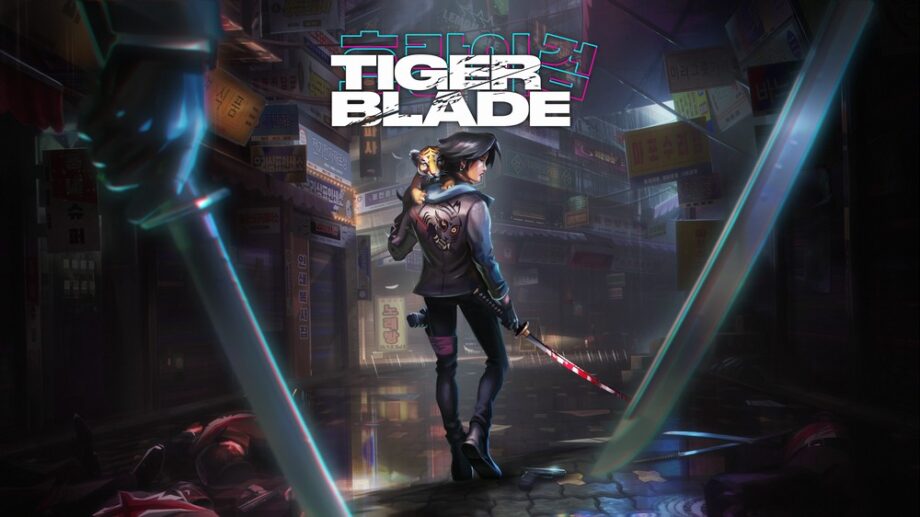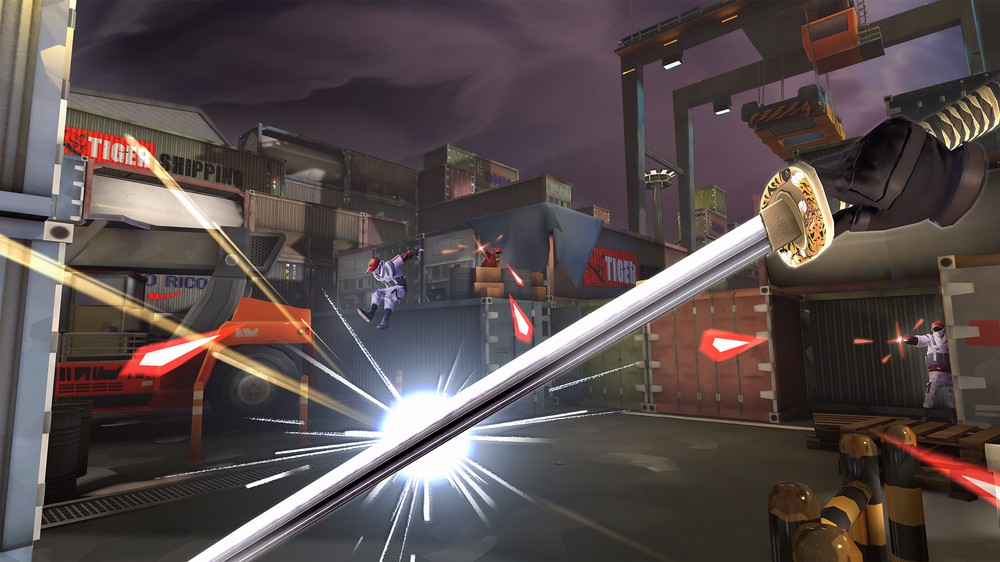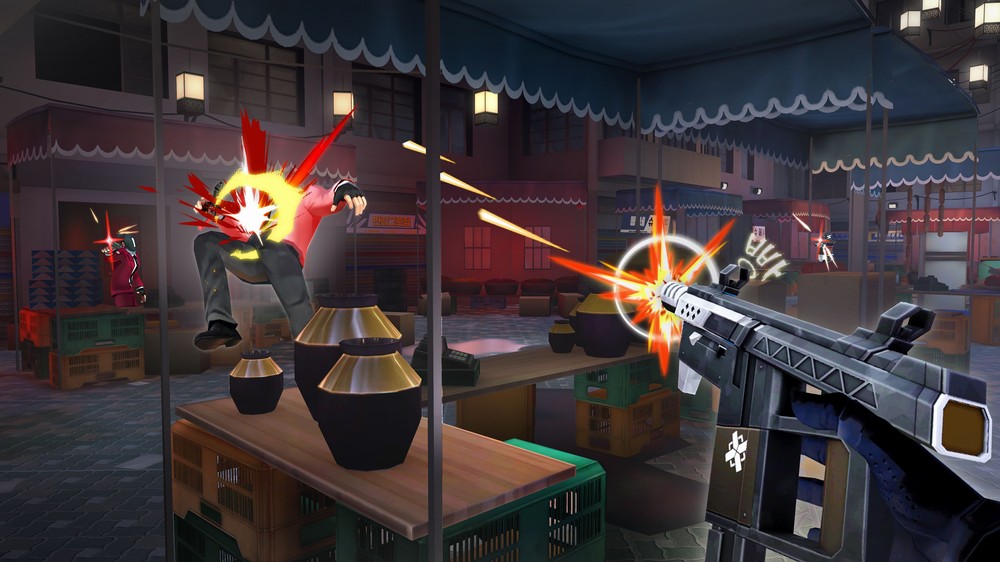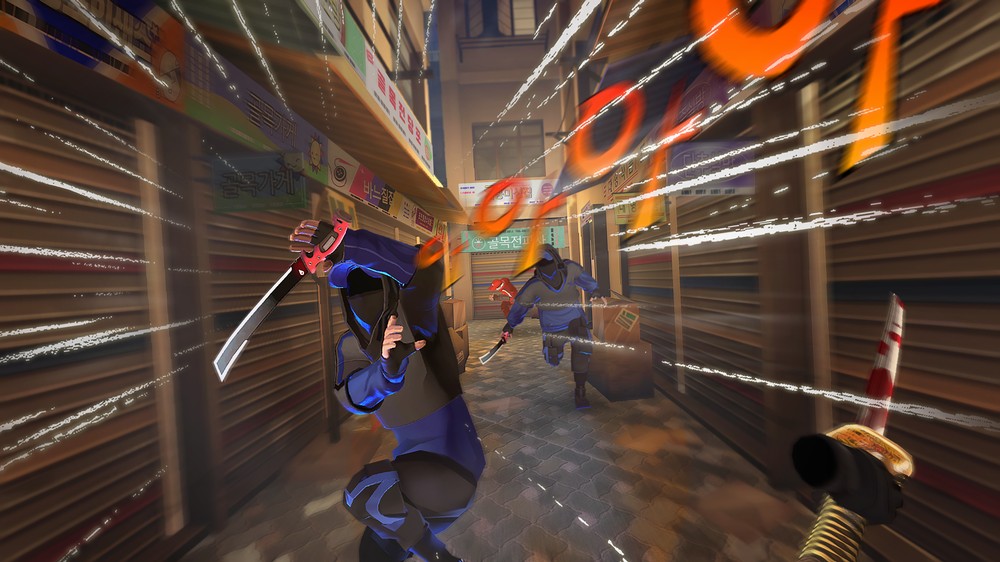I’ve been playing Tiger Blade for several weeks now, first on the PSVR2 and now on the Quest 3, and I have to say I haven’t felt like such a ninja badass since those early days of playing Superhot. Borrowing heavily on the mechanics of Time Crisis and other on-rail shooters, Tiger Blade puts you in the envious role of a ninja assassin working for a Korean crime family. Mixing up close-range katana combat with a powerful pistol for ranged opponents, you’ll get to master the art of thrilling sword fights where you slash, parry, and thrust your way to victory while deflecting incoming bullets with your steel blade before whipping out your sidearm and taking out pesky gangsters hiding around the environments.
The story takes place in a stylized alternate version of Korea, the perfect home to plenty of unique level designs that will test all your skills of combat and awareness. Traversal is either automatic, where the game will advance your position after a battle or even slashing away at debris, a door, or even a thin wall. Other times you may need to look around for something yellow and use the grapple device on your off-hand to grab and yank yourself to the next location. Once you achieve the desired flow state you will be flying around the arenas dropping dozens of baddies with your blade and bullets.
The visuals are simple yet striking, with plenty of detail in the environments and great animations for the incoming sword fighters. Muzzle flashes, sword trails, and tracer rounds light up the arena with colored lighting effects while bullets bounce off your blade with a spark. Ranged gunmen seem more like pop-up targets, but they do seem to function as a team when in groups, trying to flank your position or even laying down cover fire while their AI comrades are reloading. Thankfully the controls are spot on, and I was often able to single-shot many enemies, even while firing from the hip. Sadly, you cannot dual-wield but switching between blade and firearm is instant with a tap of a button.
The audio package is also quite excellent, especially the fantastic soundtrack with some serious groovy beats that will have your feet tapping along to the onscreen bloodbath. The 3D positional audio is fantastic, allowing you to easily locate enemies by sound, which can be a great assist as enemies populate all around you. To that end, while it is possible to play Tiger Blade seated, you are probably going to want to stand up for this as you will be looking around a lot. This definitely gives the cordless Quest 3 a slight advantage over getting tangled in your PSVR2 cord.
Tiger Blade on the Quest 3 has a few slight tech advantages over the PSVR2. Quest 3 has the new pancake lenses which offer superior visual quality, but the OLED lenses on the PSVR2 offer up a near identical visual experience with slightly better color saturation. There is heavy use of the foveated rendering on PSVR2, so I was always seeing this half-second delay where I would look at something and it would quickly snap into better detail. The Quest version seemed to have slightly better accuracy when aiming and firing my gun, and my katana seemed slightly more responsive when swinging. I’m guessing this is due to better tracking of the controllers, but again, these differences are so slight and probably not even noticeable outside of direct side-by-side comparisons. The PSVR2 version does offer some great haptics on their hand controls and even some headset rumble for extra immersion.
Tiger Blade offers up a compelling story to tie its series of missions together, and each mission is scored and ranked and saved to online leaderboards where you can compete for best scores and completion times. This is going to be a speedrunners dream game. The overall plot involves stealing a package from a rival gang with some precious and perhaps even mythical contents, and while the story thins in places, for the most part it does a great job of incentivizing your continued play. Missions take only a few minutes each, giving the entire game this comfortable pick-up-and-play arcade vibe, but nobody would blame you if you emptied your battery on a binge session – this game is addictive.
There is a nice progression of difficulty for the story missions, and your weapons have a nice upgrade path to match the enemy forces in each mission. Even after you complete the campaign there are plenty of Challenges available. At the time of this review, they have just released the third Challenge update. Each of these updates have introduced new levels and modes and even leaderboards to track your progress. For those who need a greater challenge than the story mode offers will find plenty of activities to keep you playing in this free post-launch content.
There are plenty of VR shooting and sword fighting games out there, but none that have blended the two combat styles together more effectively or seamlessly than Tiger Blade. There is maybe a 20-30 minute learning curve to blend movement and combat into something very special, and when you find your groove, especially when it syncs to the stellar soundtrack, you are going to be in for one wild ride. I totally recommend Tiger Blade for either VR format with a slight nod to the Quest version if you have to choose.















